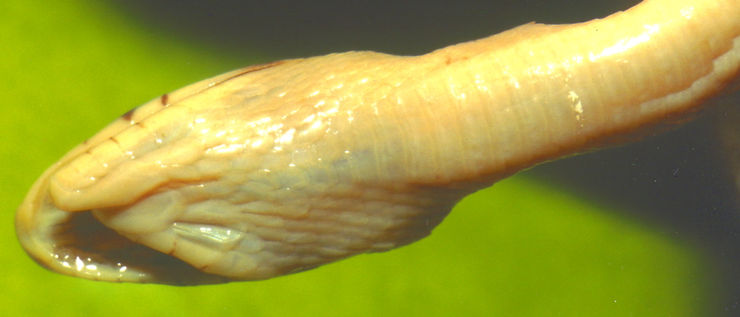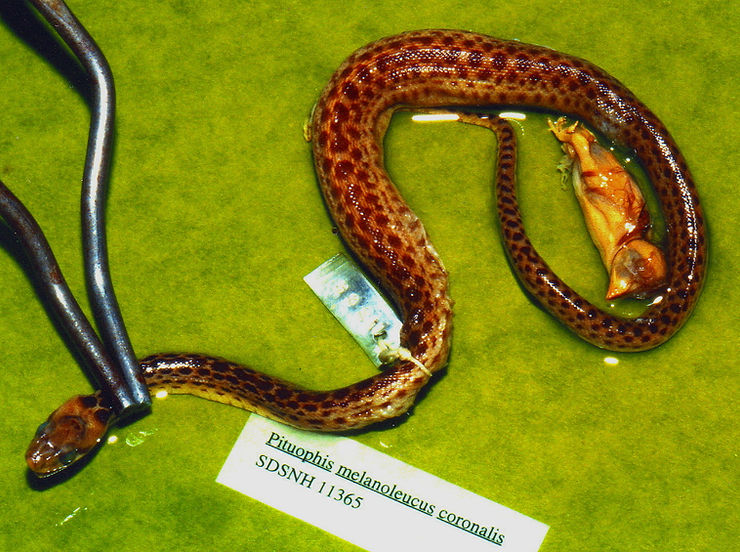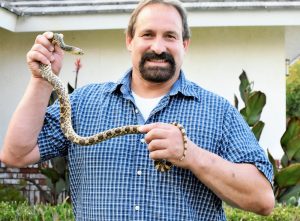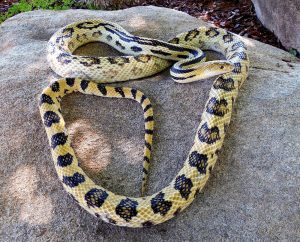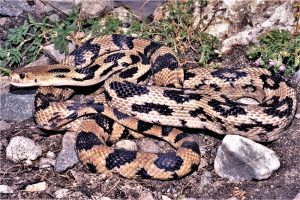CORONADO ISLAND GOPHER SNAKE Pituophis catenifer coronalis
extinct subspecies Photo By Patrick Houston Briggs
(Courtesy given to the San Diego Society of Natural History SDSNH)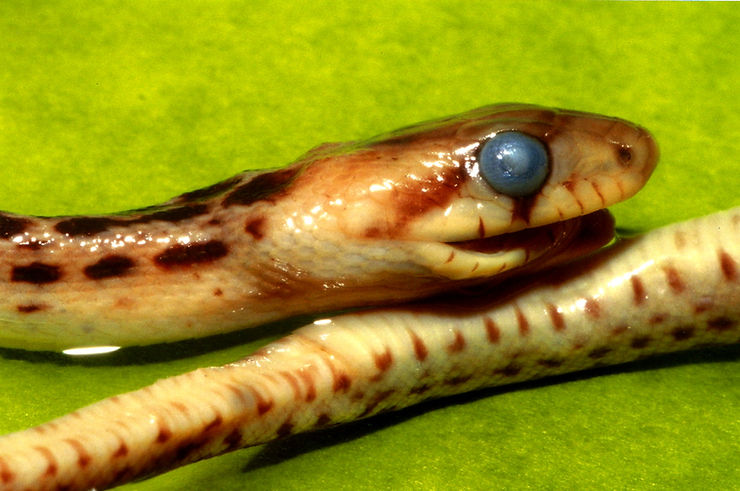
CORONADO ISLAND GOPHER SNAKE
Pituophis catenifer coronalis CORONADO ISLAND GOPHER SNAKE
Image Courtesy San Diego Society of Natural History SDSNH.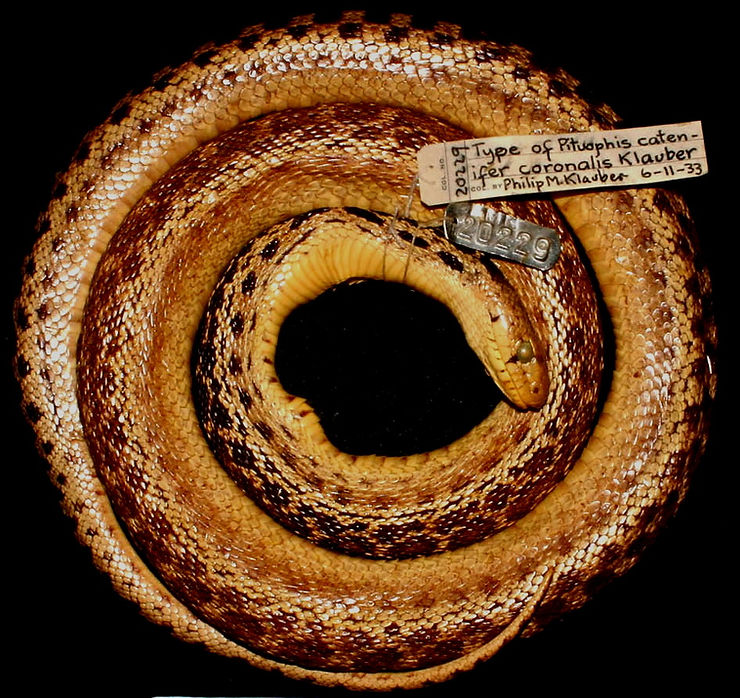
(considered extinct)
Photo By Patrick Houston Briggs
(Courtesy to the San Diego Society of Natural History SDSNH)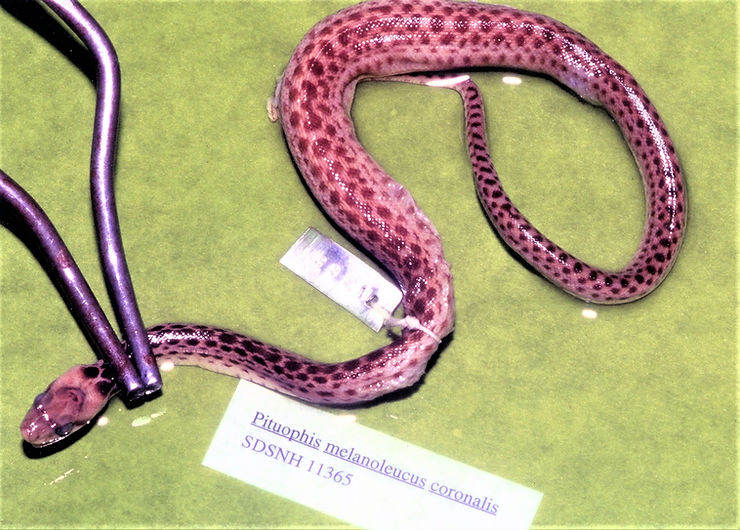
Coronado Island Gopher Snake ( Klauber, 1946)
Pituophis catenifer coronalis
By Patrick Briggs
Pituophis catenifer coronalis is an insular (island) subspecies that closely resembles the mainland race Pituophis catenifer annectens.
The scientific epithet coronalis is Latin meaning “crowned”. The word crowned in Spanish is a similar word “coronado”. This race of gopher snake is named for at least one of the Coronado islands (Islas de los Coronados) or Islands of those Crowned or Crowned Islands.
Therefore, the vernacular Coronado Island Gopher Snake in English, translates to Crowned Islands Gopher Snake from the scientific Pituophis catenifer (melanoleucus) coronalis.
Although we call it the Coronado Island gopher snake, it actually is a group of small islands and islets with volcanic history found off the northwest coast of Baja California
(Not to be confused with Coronado City of the peninsula bordering the San Diego Bay).
The 4 significant islands are North Coronado, Pilon de Azucar, Central Coronado, and South Coronado. Only four Coronado Island Gopher Snakes have ever been collected and recorded in the early 1900’s. Three of the four individuals of this subspecies were found verifiably on the South Coronado Island (Isla Coronado Sur). It is unknown from which of the 3 islands the 4th specimen came. The record by Frank Stephens merely states, “Coronado Islands”. Three specimens were males and one was female. This subspecies may currently be extinct.
In the latter 1990s, after examining many shelves of preserved reptiles in glass jars from the late Klauber’s collection, and with the assistance of a museum attendant, Adrienne D. Russell, I discovered a preserved juvenile Coronado Island Gopher Snake labeled on an alluminum tag 11365 and tied to the front portion of the snake’s body The jar that held the specimen was labeled Pituophis melanoleucus coronalis (San Diego Society of Natural History) SDSNH 11365. The specific name had not yet been changed
to catenifer so it still was labeled as melanoleucus. It had been collected April 21, 1916 by Frank Stephens (the first director of the San Diego Natural History Museum).
Its location is recorded as “Coronado Islands”. Along with that rare ophidian specimen can be seen one of two island fledgling birds that had apparently been found in the stomach. This and other jar-preserved animals were at an abandoned military site temporarily being used by the San Diego Natural History Museum.
In addition to stumbling across this and other herpetological jewels, it subsequently was made known to me that three other specimens were available in other locations.
One of them was the holotype (the first specimen used to describe a new animal) Type–No. 20229 that was an adult female and the longest of all 4 individuals at 1150mm overall length. Its tail measured 171 mm. This specimen can also be found in the Laurence M. Klauber’s collection (LMK) of San Diego with more information and some images on the following web site:
http://www.google.com/imgres?q=pituophis+catenifer+coronalis&start=182&hl=en&sa=X&tbo=d&rlz=1T4GZAG_
enUS492US493&biw=1024&bih=538&tbm=isch&tbnid=ukD33YqdjdBL0M:&imgrefurl=http://www.sdnhm.org/archiv
e/research/herpetology/record_detail.php3Fherp_id3D93&docid=fEa8z7PVQJkyxM&itg=1&imgurl=http://www.sdnh
m.org/archive/research/herpetology/img_uploads/large/20229a.jpg&w=1600&h=1158&ei=Sp
mvUNOwL6T2iwK88oDACg
&zoom=1&iact=hc&vpx=349&vpy=148&dur=2266&hovh=191&hovw=264&tx=147&ty=105&si
g=102064726668536513972&page=15&tbnh=156&tb
nw=136&ndsp=13&ved=1t:429,r:6,s:182,i:329.
Although I’m not sure where the other 2 are located, they have been labeled CAS 13588 and CAS 135589. I’ll attempt to find out where they are located. I’m sure that many researchers would be very excited to know the location of these specimens, so that images could be photographed, published, and posted on the internet as another significant visual resource just as this site has done with specimen 11365 and in the publication, Reptiles Magazine April 2001 and the the 20229 holotype specimen collected by Phillip M. Klauber June 11, 1933 in the site by the San Diego Natural History Museum. This would allow researchers from both the scientific community and the public who take interest in this genus, to compare the images online, and examine patterns, color, and scutellation.
Although the insular coronalis and the mainland subspecies annectens resemble each other, there are differnces between both forms in scutellation and pattern.The imposition
of suboculars between the eyes and the supralabials and the fusion and other abnormalities of scales on the head are two distinct examples of how the scales differ between these
subspecies. Additionally, there are races such as Pituophis catenifer deserticola that often occur with suboculars, but other characters such as few body blotches and subcaudal
scales easily distinguish it as deserticola. Patterns are also different between the two forms.
The Coronado Islands race has fewer and narrower blotches and tail markings, and they tend to be more circular and more widely spaced. There is also less stretching of marks along the sides. Laurence Klauber describes the ground color of coronalis as buff or yellowish. It could also be considered an old dry straw coloration suffused with smudgy gray and brown lateral spotting. The belly is buff and may occur with suffused markings and spots of gray and black. One individual collected is marked with an imperfect double row of triangles on the underbelly. Specimen no. 11365, the juvenile snake has a speck nearly every two belly scutes at the edge on each side. The other preserved snakes are virtually unmarked on the ventrum. The head pattern is light brown above not conspicuously marked. Even so, there is on each side, a distinct subocular line on all specimens collected and some of the other sutures between the upper and lower labials may be streaked with a darker color. Moreover, atleast on the juvenile specimen, a dark bar angles downward from behind the eyes and contines through the last couple supralabials on each side. The color under the head is cream colored without blemishes. The head is rather blunt when viewed from above and moderately distinct from the neck.If you attempt to count the blotches of this photo slide scan of the preserved juvenile coronalis specimen 11365 below, you will find it’s difficult to do. With confluent blotches and markings merging or blending with others, and from this wet preserved specimen, and light glare, tools obstructing a few markings, and along with other factors, it can be quite a challenge. Even, authorities argue the count. Although the circular markings may connect less often, its pattern seems to be quite similar to the coastal mainland subspecies of the San Diego region, annectens. The adult specimen 20229 appears to have a much less busy lateral pattern, especially at the mid-body than the juvenile. Klauber and Grismer report that in the coronalis, suborbital scales prevent the supralabials on each side from making contact underneath the eyes Herpetologist KLAUBER reports only one of the four individuals ever collected No. 11365 had the supralabials that contacted the eyes. Unless he referrs to the left side of the head which I did not photograph, my closeup slide photo scanned to the computer contradicts his report. Infact, it can be observed that also in the 11365 specimen, suboculars impose between supralabials and the eyes. He also believed that this particular individual may not have come from the South Coronado Island. Of the only four specimens known, the head plates of coronalis are said to be irregularly fragmented.
I’ve also noticed that upon closely observing the upper head on specimen exhibit animal 11365, the prefrontals number only 2 (normally most coastal catenifer have 4 prefrontals).KLAUBER reports that none of the 4 Coronalis specimens collected exibit the trademark of 4 prefrontals. Body pattern in coronalis is similar to annectens but with rounder and more narrow markings that are spaced wider apart and become square-like especially near the tail. They sport 2-3 lateral rows of of dark markings along each side and a pale belly with dark spotting on the belly and underneath the tail. Laterally the markings also don’t blend quite as much as annectens. There are 64-70 widely spaced vertebral blotches that are black at the anterior and posterior regions of the body and brown speckled with darker brown at the midbody region. Instead of black, the juvenile seems to be a darker brown towards the front and rear regions of its body. In both young or adult snakes, around the neck region, these blotches are highly irregular, confluent anteriorly, and subsequently, difficult to count. There are reportedly 18-26 upper spots on the tail region with no distinct pattern underneath it. The following describes scale or scute arrangement of this reptile.
Scutellation:
Rostral Triangular, wider than high, slightly convex viewed from above
———- raised above adjacent scales, rostral sets deep between internasals
Mid-body 31-35
Supralabials 7-10 some scales fused
Ventrals 222 male
Infralabials 11-14 some scales fused
Ventrals 229-333 females
Subcaudals 82 male
Subcaudals 69-71 females
Nasals subequal with Loreal, small and pointed at the rear
Loreal Single, always longer than high
Anal entire
Parietals wrinkled and irregular
Preoculars 2-3 each side with the uppers quite large
Postoculars 3-5 each side the lower 2 very small and considered suboculars
————– separating labials from eyes
Frontal widest at the front
Prefrontal 2-3
Temporals 3+4 to 4+5
Apical Pits nearly absent
Keeled Scales Mid-dorsal scale row and upper 6 rows on each side only
Smooth Scales Lower 10 rows on each side of body only
Mental Small and triangular followed by 1st infralabials contacting medially
Genials 4 (Two long anterior genials followed by a shorter pair separated by
———– two or three rows of gulars) L. M. Klauber
Pituophis catenifer coronalis CORONADO ISLAND GOPHER SNAKE
By Patrick Houston Briggs (Courtesy to the San Diego Society of Natural History SDSNH)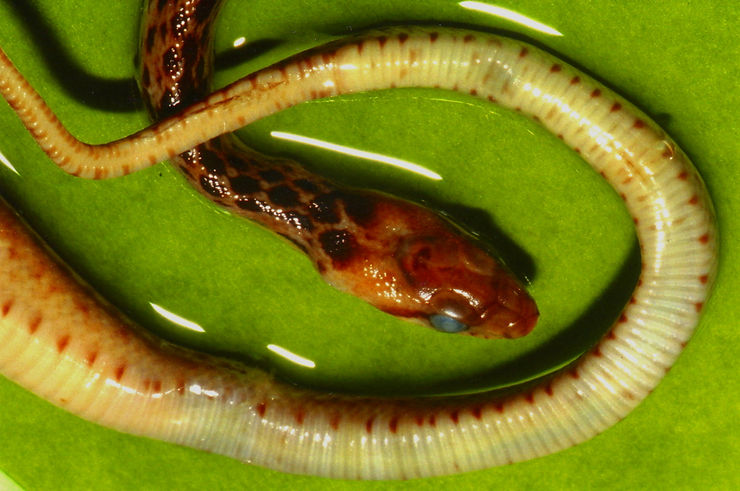
(Courtesy given to the San Diego Society of Natural History SDSNH)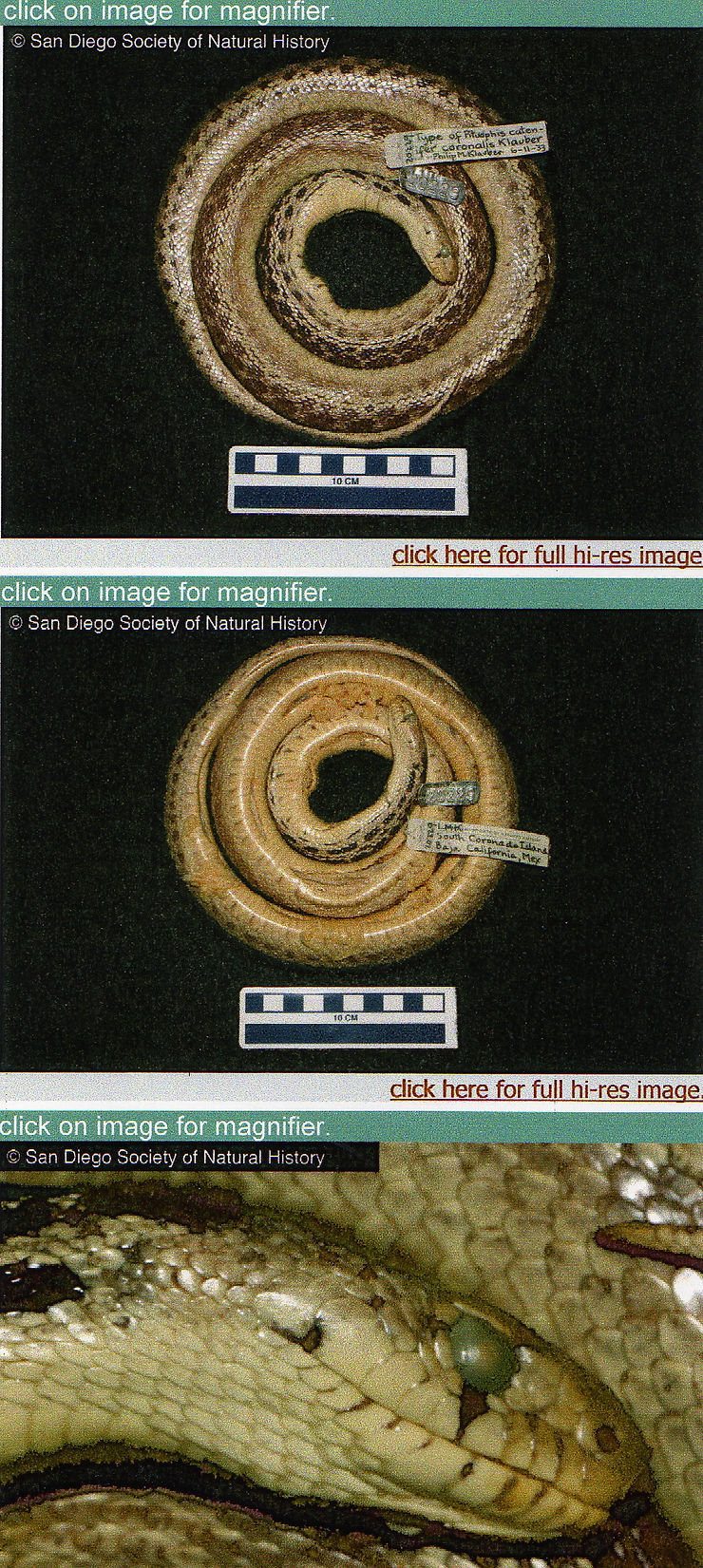
Photo By Patrick Houston Briggs
(Courtesy given to the San Diego Society of Natural History SDSNH)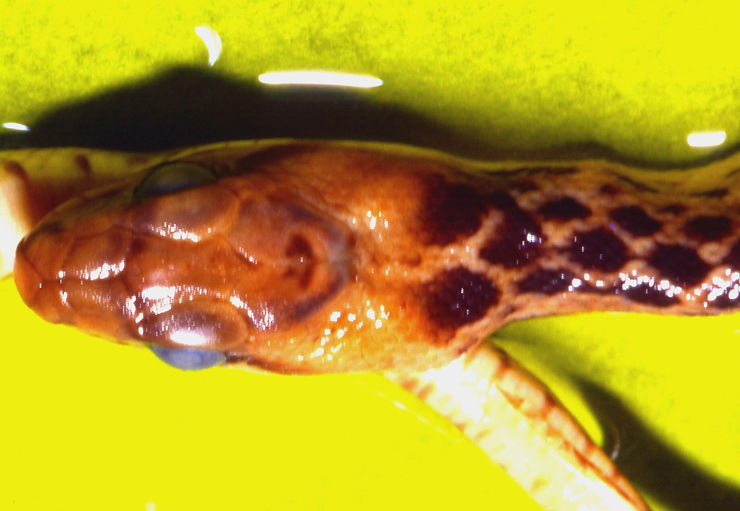
Photo By Patrick Houston Briggs
(Courtesy given to the San Diego Society of Natural History SDSNH)